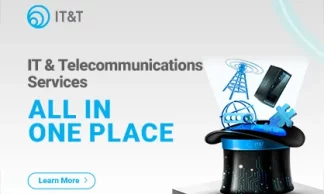When new technologies make big promises, how do you tell what is hype and what is commercially viable? Gartner's Hype Cycles represent the maturity and adoption of technologies, as well as their potential to solve real-world business problems. Gartner's Hype Cycle approach provides insight into the evolution of certain technologies over time, allowing organisations to manage their adoption within the context of their business objectives.
Gartner's Hype Cycle can be used as an instructional tool. Organisations may find it beneficial to explore the promise of emerging technologies in the context of their risk tolerance. Early adoption can benefit a company willing to take calculated risks and acknowledges that higher risk investments may not always pay off. Corporate executives usually recognise the importance of early investment, but they will also demand a thorough cost-benefit analysis if new ideas and technology are not thoroughly validated. New technology may not be worth pursuing if there are too many unanswered questions about its economic viability.
Each year, Gartner releases roughly one hundred Hype Cycles covering a range of industries. The life cycle of technology can be divided into five distinct phases, documented in the corresponding Hype Cycle:
- The "Innovation Trigger" refers to a potential technological breakthrough that initiates the innovation process. Initial publicity and proof-of-concept stories generate much attention. However, there is usually the absence of marketable products.
- During the "Peak of Inflated Expectations" phase, success stories emerge, typically followed by other recorded failures. Only a handful of companies take action.
- Failed experiments and implementations mark the "Trough of Disillusionment" phase. Pioneers often resign when the vision fails to come to fruition. Investments will only continue if the survivors improve their products enough to satisfy early adopters.
- The "Slope of Enlightenment" phase demonstrates how technology can help organisations grow. Benefits begin to accumulate and become more widely recognised. Technology providers launch second and third-generation products. Conservative businesses may remain wary.
- The "Plateau of Productivity" is the point of mass adoption. The criteria for technological viability have been refined. The technology's applicability and usefulness have been proven.
A business can use Hype Cycles to differentiate between hype and the underlying drivers of a commercial promise, minimising the risk of technology investments.
Engineering innovation through trust, growth, and change
In the face of ongoing economic and strategic uncertainty, organisations may be challenged to build a solid and resilient business foundation to create and build on new opportunities. Those who can navigate risks, such as technology and vendor immaturity, will triumph.
Businesses should look to learn to how to shape change and use disruption to survive and thrive. According to Gartner, this necessitates engineering trust, accelerating growth, and sculpting change. The collection of Hype Cycles and innovations can assist businesses in determining the best path to success.
Security and reliability are required for trust. IT should be trusted to establish innovations as long-term business assets. Innovations and work processes should be dependable and scalable. For IT to deliver, business risk must be strategically managed.
Organisations should look to develop growth objectives that are both practical and feasible. Often, the risk is best managed in small incremental stages in response to business requirements. Technology risk is matched against business risk appetite (through Hype Cycles) making short-term objectives more attainable. Once the innovation-driven core is scaled, accelerated growth extends delivery and value. At this point, risk and agility aid in delivering IT services that support longer-term goals.
Emerging technologies from the current Gartner Hype Cycle
In the most recent Hype Cycle, Gartner identified vital emerging technologies spurring innovation through trust, growth, and change. Key technologies to watch include non-fungible tokens (NFTs), Data Fabric, composable applications and networks, AI-driven innovation and generative AI, and Cloud-native platforms (CNPs). Hewitt Packard Enterprise is consistently at the forefront of technology evolution, with innovation ingrained in the company’s DNA. HPE has developed numerous solutions which correspond with Gartner’s Hype Cycles. Below we explore some of the HPE specific solutions which relate to the current Hype Cycle.
NFTs
NFTs are digital assets or crypto-currencies with distinct identities and values. They are not interchangeable in the same way that most current tokens are. Each has its own set of blockchain-based rules and applications. Video games, decentralised markets where products may be purchased and sold without an intermediary, and artwork on the Ethereum network that establishes ownership rights to creative works, are all examples of NFTs.
NFTs, like cryptocurrencies, may be used to trade value with anybody, anywhere, without the need for an intermediary. By implementing blockchain into our daily lives, we will witness greater widespread use of this technology in the future.
Data Fabric
Data is often fragmented inside applications, preventing it from being used as efficiently as is possible. Data fabric connects information from many systems and users to provide a unified picture.
Data fabric can discover what information is being used and how scanning metadata uses it inside built-in analytics. However, its true value lies in its ability to propose new, diversified, and higher quality data, resulting in a need to reduce data administration.
Data fabric deployments, according to Gartner, will quadruple data utilisation efficiency while cutting human-driven data management operations in half by 2024.
Defining priority areas for deploying data fabric solutions and assessing existing data consumption patterns for ongoing business operations are two ways organisations may begin to reap the advantages of Data Fabric.
HPE Ezmeral Data Fabric is industry’s first edge to cloud solution that natively ingests and stores different data types, enables in-place processing, and simplifies data access by supporting APIs, languages, and protocols popular with analytic and data science consumers. Ezmeral accelerates time to insights with single trusted data source with a unified platform that scales all data types in unison to simplify administration.
Composable Applications
We have already begun to see the benefits of software and hardware becoming increasingly linked as they share data. This is crucial for organisations because it allows them to develop platforms more quickly, as system compatibility is no longer a challenge.
Composable apps are built with software-defined components that businesses can self-assemble to build applications quickly and reduce delivery times. Composable networks have the potential to transform the way we work and live by allowing people and machines to collaborate and automate their processes without the need for a centralised data storage facility. This is accomplished using decentralised applications, in which anyone can participate while maintaining an uncompromised record of all transactions that occur.
Companies that use composable apps and networks will be able to pivot and adapt to business interruptions and crises faster.
HPE’s Composable Fabric can be leveraged as a fully integrated data centre networking solution for ease of deployment and as a set of tools woven into the overall cloud orchestration strategy. HPE rack connectivity modules are scalable, dynamic, and responsive, and the Composable Fabric Manager software is intelligent, automated, and application-driven delivering an integration layer that provides processes and tools that modern IT can leverage to efficiently transition business to the digital era.
AI-driven innovation and generative AI
While AI has provided solutions to help businesses emerge from the pandemic, organisations should look to further optimise these tools. AI engineering is the field of operationalising AI model updates using integrated data, model, and development pipelines. It combines automated updates and strong AI management.
Generative AI models use sample data to learn a digital representation of artifacts and then use them to generate new, unique, realistic artifacts that are similar to the training data but do not replicate it. The benefits of generative models are currently being demonstrated in various areas, including text, voice, and even musical composition, where they are used to generate content from previously collected data. When scaling machine learning efforts, it is crucial to rely less on human programmers, and more on generative AI built automatically using neural networks with minimum human input. It’s AI code that writes Itself.
HPE’s research lab is consistently challenging the status quo and creating new possibilities for forward-thinking businesses. One of their latest proof-of-concepts is PHORCED (PHotonic Optimization using REINFORCE Criteria for Enhanced Design). PHORCED is a tool that can be used to design and engineer physical devices, with the target application being photonics. The neural network has been trained in such a way that it recognizes patterns in a graph, providing a better optimum than conventional optimisation algorithms. It also proved to be a more resilient algorithm and offers an exciting premise for future business applications.
Cloud-native platforms (CNP)
Cloud computing is a developing trend that is expected to continue to expand. Cloud-native platforms use cloud computing's inherent flexibility and scalability to reduce time to value. They reduce dependency on infrastructure, allowing developers to focus on application functionality.
Businesses can leverage cloud-native platforms to deploy digital capabilities everywhere. Cloud computing providers use the critical properties of cloud computing to supply scalable and elastic IT capabilities as-a-service to technology innovators, resulting in a quicker time to market and lower costs.
According to Gartner, cloud-native platforms will fuel more than 95% of new digital efforts by 2025, up from less than 40% in 2021.
HPE’s Alletra is described as a paradigm shift in data infrastructure. Alletra is powered by Data Services Cloud Console, for a cloud operating and consumption experience wherever data lives. For the first time, you can get the same agility, the same simplicity, and the same cloud consumption for every single app, and across each app’s lifecycle.
Aruba Central is HPE’s cloud-based networking solution with AI-powered insights, workflow automation, and edge-to-cloud security that empowers IT to manage and optimise campus, branch, remote, data centre, and IoT networks from one dashboard. Built on a cloud-native, microservices architecture, Aruba Central is an AI-powered solution that simplifies IT operations, improves agility, and reduces costs by unifying management of all network infrastructure.
Conclusion
Gartner's Hype Cycle provides a visual of an emerging technology's maturity as it moves through five stages. Businesses can use Hype Cycles to compare their estimate of business value to experienced IT analysts, thereby reducing the risk associated with technological expenditures. HPE continues to innovate and deliver solutions as they emerge through the hype cycle.
While we, as your IT partner and advisor, recommend following and analysing Gartner's Hype Cycles and emerging technologies, we can help you identify which of these technologies will benefit your business and lay the groundwork for adoption.





